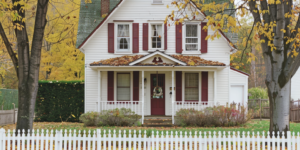8 Things You Should Do Soon After Buying a House

Whether it’s your first house, or you’re a seasoned homeowner, buying a house is a long and arduous process. But just because you’ve closed doesn’t mean your job is done. Immediately after moving into your new home, there are some things you need to do to keep your investment – and your family – happy, safe, and healthy.
1. Safely File Away All Closing Docs
When you finalize closing and leave the real estate attorney’s office, your mind is in a million different places at once. Excitement, stress, doubt, anticipation – emotions are ripe for the picking. The last thing on your mind is organizing paperwork. But it’s critical that you safely file away all of the closing documents in a safe place. You’ll need these in the future and it’s best if you put them somewhere easily accessible.
A safe or filing cabinet is ideal.
2. Find the Main Water Shut-Off Valve
Few issues can ruin a home quite like water damage. And the problem with water damage is that it often creeps up on you in the form of a sudden burst pipe or leak. In these instances, quick action can save thousands of dollars.
The smartest and fastest way to stop a leak is to use the main water shut-off valve, which is often located in the crawl space, basement, attic storage area, laundry room, or on the outside of the home. Find this valve immediately upon moving in!
3. Locate and Label Circuit Box
Once you have the water shut-off valve located, begin looking for the circuit box. This one is usually much easier to find, as it’s typically located in a conspicuous place in the basement, garage, laundry room, closet, or hallway.
After finding the circuit box, test the switches and label them so that you can easily kill power to different areas of the home when needed.
4. Find the Gas Shut-Off Valve
If your home has a natural gas supply, it’s a smart idea to find the shut-off valve. There should be one on both the inside (garage or crawl space) and the outside of the home. You can use either one – though the inside valve is typically preferred.
5. Change the Locks
Always change the locks when moving into a new house. You never know if the previous homeowner kept keys or who else has one. This is relatively inexpensive and takes hardly any time at all.
If you don’t want to completely change the hardware, you can always remove the lock cylinder and change out the pins. This is known as rekeying a lock. (Just make sure you remember to buy a new set of keys from your local hardware store.)
6. Figure Out How Your Fireplace Works
If you have a fireplace, take some time to figure out how it works. While most fireplaces look the same, there are many different types and features.
If you have a fireplace with a real chimney, you’ll want to have it inspected. Beyond that, take the time to look at things like pilot lights and venting (for gas fireplaces). If you have a wood burning fireplace, study up on how to start a fire, safely and efficiently.
7. Test Detectors
Your home should already have some combination of smoke detectors and carbon monoxide detectors installed on each floor. It’s up to you to make sure they’re placed in the proper locations and fully functional. You may also need to add more to ensure your entire house is protected.
8. Secure the House
The final step is to secure your house with a home monitoring system of some kind. While traditional options with massive national alarm companies always exist, consider some of the smaller companies that have emerged in recent years. They offer superior equipment and self-service options, which are more cost-effective (and give you greater control). But whatever you do, make sure you’re using some sort of security system to safeguard your family.
Enjoy Being a Homeowner
Being a homeowner is a huge responsibility. However, it also comes with great freedoms and financial rewards. As stressful as these last few months have been, don’t forget to take a breather. There’s plenty to do, but a few hours of rest won’t hurt anyone!







